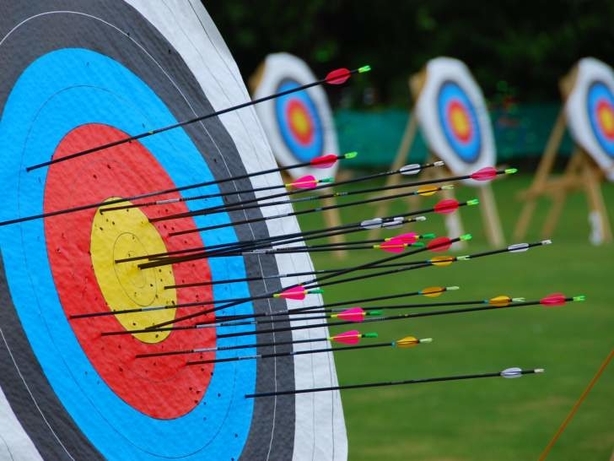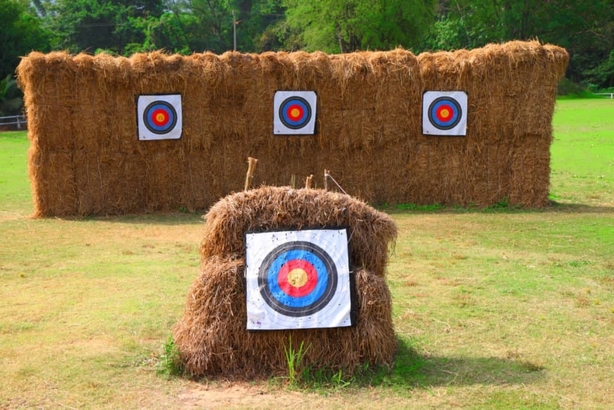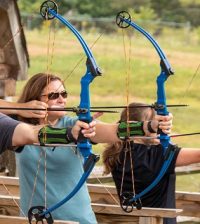Your Guide to Choosing the Right Archery Equipment
Archery has been around for a long time. It’s one of the oldest practices that still exists until this day. The earliest historians could date it is 10.000 BC, when the bow and arrow were used for hunting by the Egyptians and Nubian cultures. We can also see pictures of archers and hunting on many different objects, wall paintings and records dating from the Shang dynasty. There are mentions of it in Greek mythology and English literature. Plus, the famous Robin Hood made archery even more popular in his time.
After archery was deemed unnecessary in warfare, people transformed it into a sport. The first modern-day competition was held in Finsbury, England, in 1583, and 3000 people took part. After a long time of trying, it was finally allowed into the Olympics in 1972 as an official competitive sport.
Archery Essentials
If you’re looking to enter the archery world, you should be equipped with the proper pieces of gear.
Bow

When you’re a beginner in this sport, it’s important to buy a high-quality bow that will fit you well. Good quality doesn’t necessarily mean more money. Many options won’t break the bank but will still provide you with a good aim. Before buying, always ask for some professional advice and support. Find a well-supplied archery shop where you can choose from a variety of bows. Let’s take a look a the different types of bows.
Traditional
Longbows and flat bows belong in this category of traditional bows. They consist of a single piece of wood or several types of wood glued together, also known as laminated wood. These bows can have a height of up to 1.8m, so before buying something like this, think about the storage options and is it convenient for you to transport them because they don’t break down into smaller pieces. They’re somewhere in the middle between recurve and compound bows when it comes to price.
Recurve
While the term “recurve” relates to the bow’s design, it’s also used to describe recurve detachable bows, including risers, removable limbs, and accessories. There is a large selection of parts available, ranging from low-cost to high-end. One of the benefits of a recurve bow is that the components can be changed one time instead of replacing the complete bow at once. Most beginners start their training with these recurve bows.
Compound
Compound bows are technologically most advanced than the rest. They are designed to be faster and more accurate because of the developments they acquired. There are peep sights that let you aim better, and a function called “let off” makes the holding of the bow easier by lowering the force you need to do so. They’re on the expensive side, and the additional accessories you can buy are also costly.
Arrows

Choosing your arrows for the first time can be overwhelming. There are a few components you need to consider that’ll help you make the right decision. The arrow spine and length depend on the bow you’re using. You also need to know your draw length and pull weight to choose the proper spine and length of the arrow. The shaft pattern is next. In carbon and aluminium arrow shafts, wood grain, camo and black are the most common patterns, and for wooden ones, you have versatile stain and accent colours, such as a crown dip. And the last thing is the material.
Wood
This is the most traditional material for arrows. It’s the first one people used to make these hunting accessories, and they’re the least expensive option. On the other hand, they require maintenance and proper care. You need to straighten them out after a while. They have a quiet flight path compared to other materials. One of the most popular wood materials is the Port Orford Cedar, then come laminated birch, douglas fir, bamboo and lodgepole pine. All of them have different characteristics, looks and weights.
Carbon
Carbon is more durable than wood and holds its straightness longer. These arrows can be customised with inserts, weight systems and adapters. Keep an eye on some cracks because they shatter when they reach the end, which can be very dangerous. Carbon is usually light, but you can do it with weight tubes if you want to add some weight. Also, tuning the arrow to the bow is easier with carbon because of the different points you can add. There are many sizes for diameter, but the most popular are smaller ones because of their deeper penetration and less wind drag.
Aluminium
Aluminium is heavier than the previous two and has good penetration, are budget-friendly and have tight tolerances. You can tune them to perfection easily. They’re durable and sturdy and will only bend if they hit a hard surface. If the bend is slight, you can straighten them out and use them again.
Fibreglass
Fibreglass can be an excellent shaft for bow-fishing or child archery, even if it’s not particularly prevalent on the target range or in the woods. The main reason for this is that they are highly powerful. The weight is the heaviest of all arrow shafting options, and the price is reasonable. They’re very durable, which is good for young archers. If they don’t lose them, fibreglass arrows will be perfect for beginners.
Target

Targets are something you can find in every archery shop with hunting equipment. Depending on how much you use the target, you have a couple of options. Hay bales are one of the most popular and perfect for beginners. They’re large and affordable, and arrows sink in and come out with ease. But they can fall apart quickly because of the weather conditions or animals. Bag targets are usually made from tough layers, often polypropylene, and filled with plastic scraps or cotton. They’re inexpensive, easy to acquire and portable.
Layered foam targets are perfect for people who practice archery regularly. They’re durable and don’t make a mess. But don’t leave them out in the open because the weather might damage them somehow. Solid foam targets are great for daily usage for more experienced archers. They are weather-resistant and often have replaceable sections. 3D targets work best for hunters that want to practice more. They can go in many positions and help you develop your shot evaluation.







